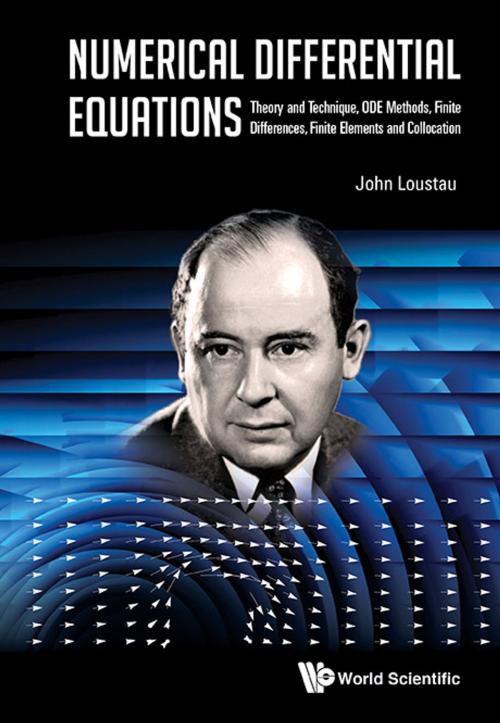Numerical Differential Equations
Theory and Technique, ODE Methods, Finite Differences, Finite Elements and Collocation
Nonfiction, Science & Nature, Mathematics, Differential Equations| Author: | John Loustau | ISBN: | 9789814719513 |
| Publisher: | World Scientific Publishing Company | Publication: | March 7, 2016 |
| Imprint: | WSPC | Language: | English |
| Author: | John Loustau |
| ISBN: | 9789814719513 |
| Publisher: | World Scientific Publishing Company |
| Publication: | March 7, 2016 |
| Imprint: | WSPC |
| Language: | English |
This text presents numerical differential equations to graduate (doctoral) students. It includes the three standard approaches to numerical PDE, FDM, FEM and CM, and the two most common time stepping techniques, FDM and Runge-Kutta. We present both the numerical technique and the supporting theory.
The applied techniques include those that arise in the present literature. The supporting mathematical theory includes the general convergence theory. This material should be readily accessible to students with basic knowledge of mathematical analysis, Lebesgue measure and the basics of Hilbert spaces and Banach spaces. Nevertheless, we have made the book free standing in most respects. Most importantly, the terminology is introduced, explained and developed as needed.
The examples presented are taken from multiple vital application areas including finance, aerospace, mathematical biology and fluid mechanics. The text may be used as the basis for several distinct lecture courses or as a reference. For instance, this text will support a general applications course or an FEM course with theory and applications. The presentation of material is empirically-based as more and more is demanded of the reader as we progress through the material. By the end of the text, the level of detail is reminiscent of journal articles. Indeed, it is our intention that this material be used to launch a research career in numerical PDE.
Contents:
-
Modeling and Visualization:
- Some Preliminaries
- Problems with Closed Form Solution
- Numerical Solutions to Steady-State Problems
- Population Models
- Transient Problems in One Spatial Dimension
- Transient Problems in Two Spatial Dimensions
-
Methods and Theory:
- Finite Difference Method
- Finite Element Method, the Techniques
- Finite Element Method, the Theory
- Collocation Method
Readership: Graduate students and researchers.
Key Features:
- There is no text/reference book that covers as broad a list of techniques as completely and as efficiently
- We accomplish this by judiciously selecting preliminary material that is essential
This text presents numerical differential equations to graduate (doctoral) students. It includes the three standard approaches to numerical PDE, FDM, FEM and CM, and the two most common time stepping techniques, FDM and Runge-Kutta. We present both the numerical technique and the supporting theory.
The applied techniques include those that arise in the present literature. The supporting mathematical theory includes the general convergence theory. This material should be readily accessible to students with basic knowledge of mathematical analysis, Lebesgue measure and the basics of Hilbert spaces and Banach spaces. Nevertheless, we have made the book free standing in most respects. Most importantly, the terminology is introduced, explained and developed as needed.
The examples presented are taken from multiple vital application areas including finance, aerospace, mathematical biology and fluid mechanics. The text may be used as the basis for several distinct lecture courses or as a reference. For instance, this text will support a general applications course or an FEM course with theory and applications. The presentation of material is empirically-based as more and more is demanded of the reader as we progress through the material. By the end of the text, the level of detail is reminiscent of journal articles. Indeed, it is our intention that this material be used to launch a research career in numerical PDE.
Contents:
-
Modeling and Visualization:
- Some Preliminaries
- Problems with Closed Form Solution
- Numerical Solutions to Steady-State Problems
- Population Models
- Transient Problems in One Spatial Dimension
- Transient Problems in Two Spatial Dimensions
-
Methods and Theory:
- Finite Difference Method
- Finite Element Method, the Techniques
- Finite Element Method, the Theory
- Collocation Method
Readership: Graduate students and researchers.
Key Features:
- There is no text/reference book that covers as broad a list of techniques as completely and as efficiently
- We accomplish this by judiciously selecting preliminary material that is essential















